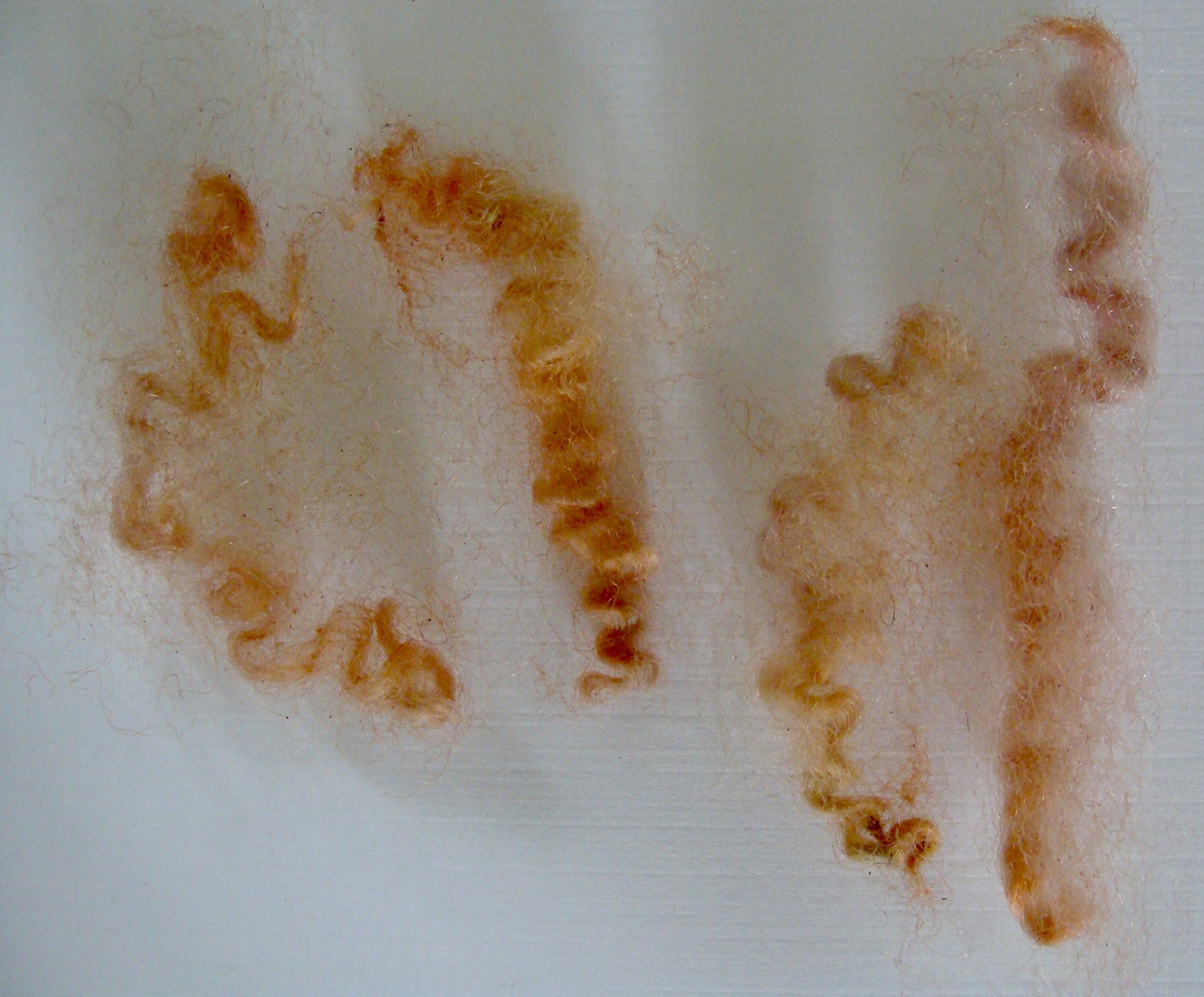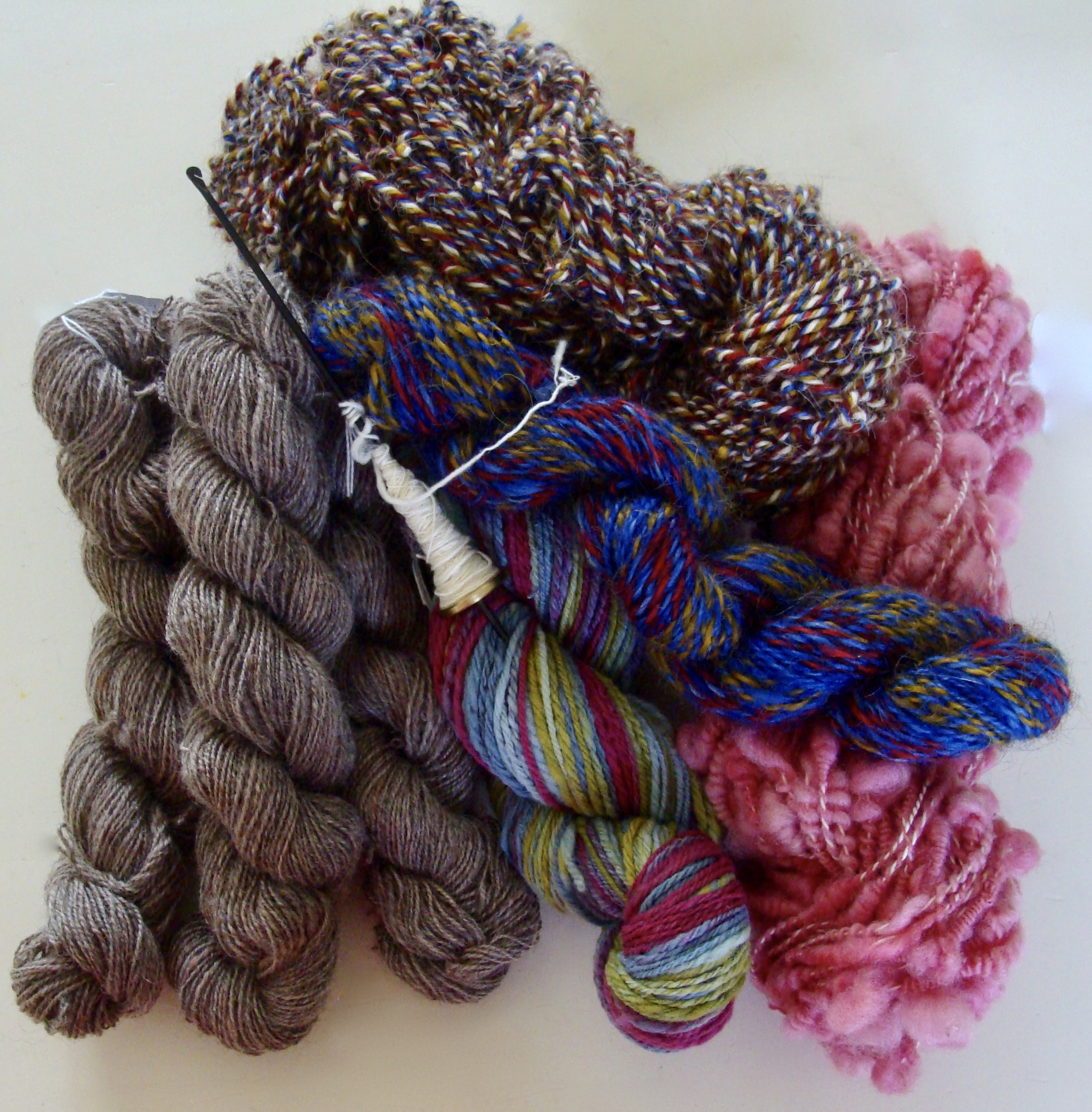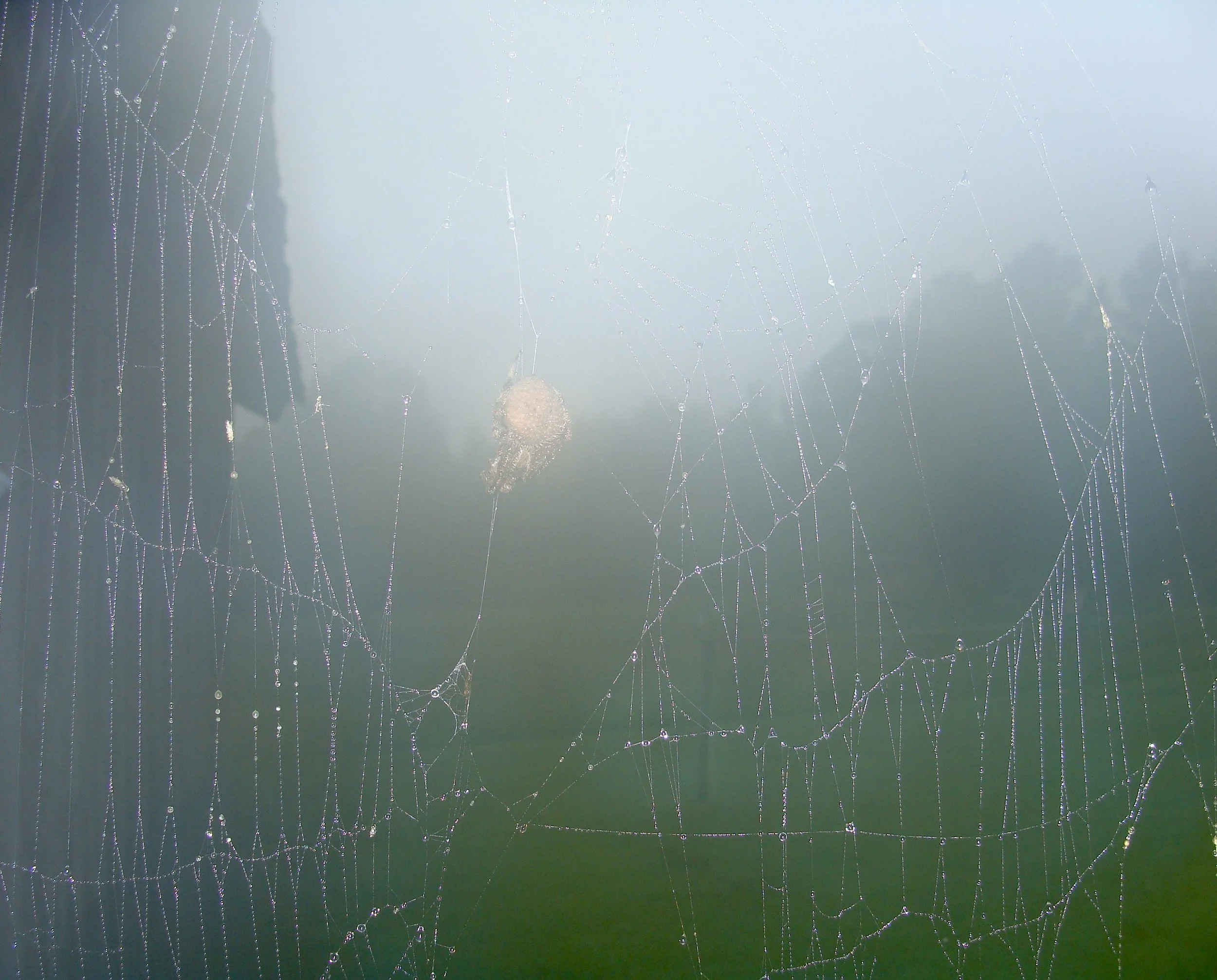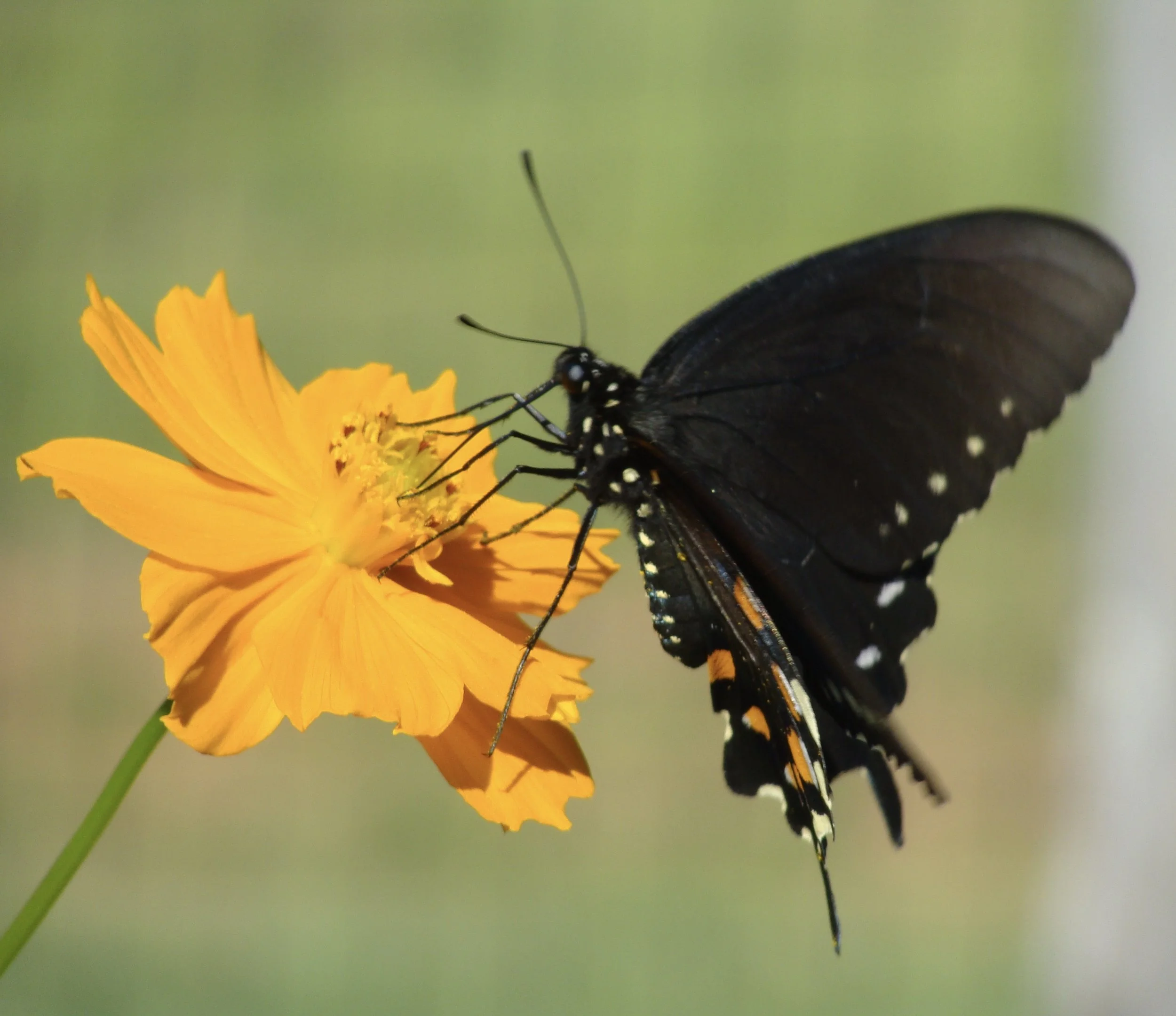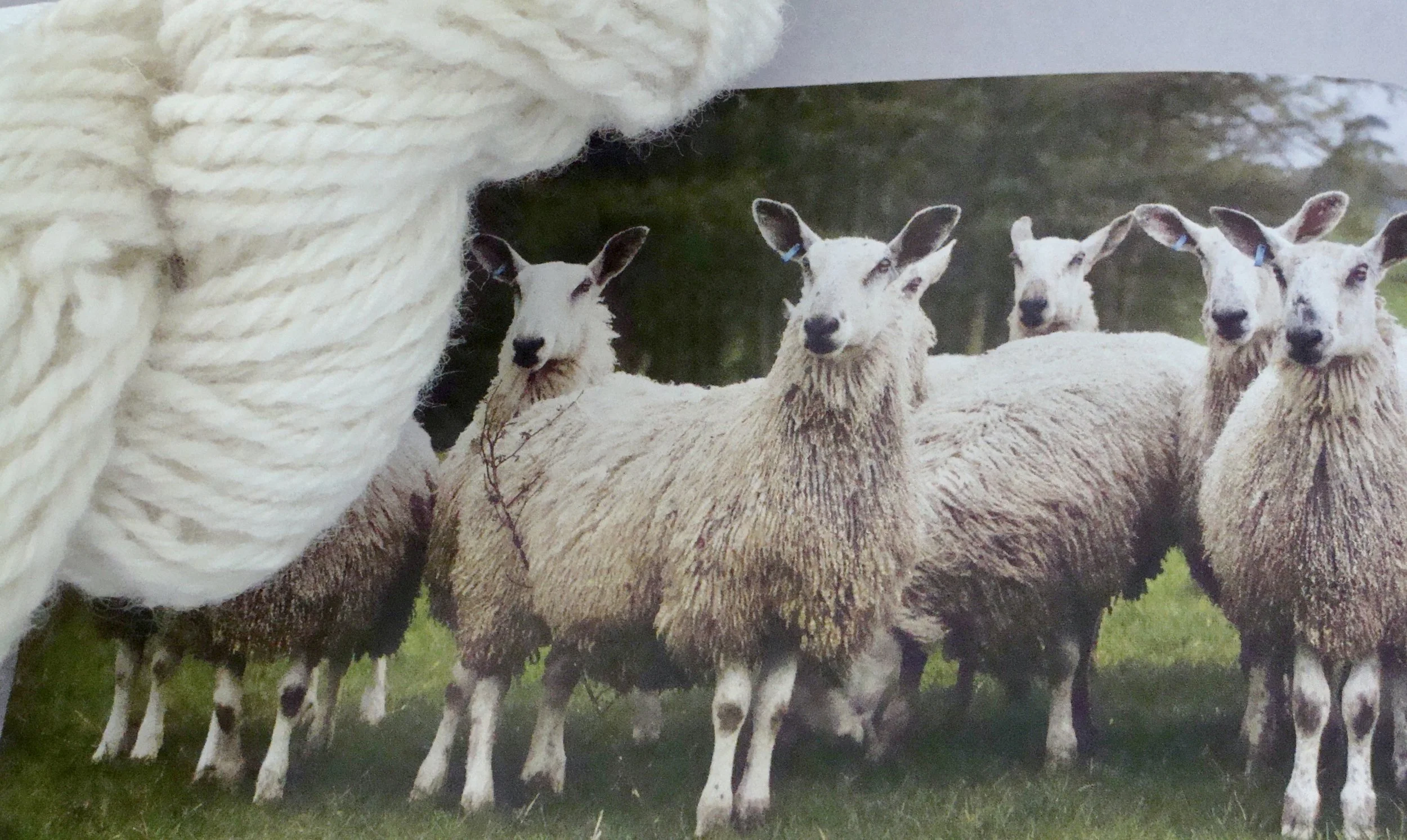Let's Spin . . . Romney
I'm planning to weave an Autumn shawl from handspun, so my wheel is busy spinning the fibers for the project. The yarn needs to be something that when woven will create a lightweight fabric that is airy, yet stable, and has a soft drape. The fabric will then be fulled during the finishing process to lock in the fibers of a woven inlay of multicolored leaves.
Full - fibers are washed under similar conditions used to produce felt but the process is stopped before felt is produced. In fulling, the fibers/yarns become less distinct and more of a unified whole.
as opposed to
Felt - fibers have meshed together so they can't be pulled apart; typically through the process of applying heat, moisture, and agitation. Felting is irreversible. Each sheep breed makes a different type of felt and some felt more easily than others.
I chose Romney wool to fit the above wish-list of yarn qualities for my shawl. Read on and see what you think about my choice of this fiber.
photo courtesy of Dr. Jerry Fitch, Extension Sheep Specialist, Department of Animal Science, Oklahoma State University
Romneys are large sheep known for their calm and friendly disposition. Their origin traces to the marshy coastal area of southeast England. The landscape was abundant with lush forage that was excellent for feeding livestock, however it was often swept with harsh winds and heavy rainfall. The sheep, in time, adapted to these conditions and thus developed some of the characteristics we see in the Romney breed. These traits include hooves that are resistant to foot rot and fleeces that remain healthy in harsh and humid weather.
In the mid-nineteenth century, the Marsh Romney was bred with Leister bloodlines which led to our modern Romney breed. In 1904, William Riddell of Monmouth, Oregon, imported the first Romneys to North America. The Romney's tolerance of humid climates worked well in the Pacific Northwest.
dyed Romney yearling locks
Romney fleece is a classic wool fiber and very popular with handspinners. It is extremely versatile combining several desirable traits. Another member of the English Longwools (see previous posts on Lincoln and Blue Face Leicester), it is the finest fiber of all the longwool breeds; ranging from 29 to 37 microns. The fleece is long (4-8 inches) and lustrous with well-defined, uniform crimp that hangs in distinct locks.
White, black, gray, silver and brown are the natural colors, however Romney wool readily takes dye as well. In general, it is a good felting fiber. Romney can be used for many projects, ranging from next to the skin items (finer fleeces) to outer wear to rugs and tapestry.
For my Autumn shawl, I wanted a tan color yarn for the base. To achieve this, I combined two different color Romney fibers I had in my stash. I blended a 75% proportion of Light Grey Romney Sliver (top left) with a 25% proportion of hand-dyed orange Romney yearling fiber (top right). The first pass through the drum carder produced five batts. I divided each of these batts into five piles. I took one of these divisions from each pile and ran through the drum carder again making five batts. I then took each of these five batts and ran them through the carder for a third and final blending. On the bottom row in the photo (from left to right) are initial, second, and third blendings.
I ended up with five batts and four small rolags totalling 9.5 ounces.
Technical Alert - I am spinning the yarn Z-twist with a short forward draw, then plying S-twist both on a 10:1 ratio on my Louet S-17 wheel.
So far, I've spun three skeins with the fourth currently on my wheel. The two-ply yarn averages 20 wraps/inch. The photo does not accurately capture the true color. It turned out a beautiful tan with slight variegations that gives it extra depth and interest. Because the completed shawl will be fulled during finishing, I did not wet finish this yarn as I normally do.
I am really enjoying spinning Romney! If you are a non-spinning knitter, crocheter, or weaver, I wholeheartedly agree with the authors of "The Fleece and Fiber Sourcebook" when they say:
Romney is a reason all on its won to learn to spin your own yarn, and the fiber is so amenable it will help you learn the craft.
As a little update, Tour de Fleece is over and I met my three goals: to spin everyday for at least an hour, complete two challenges (I actually did three), and have FUN!! Above is a photo of my completed yarns. My spinning included:
- Navaho Ply - Merino 153 yd/1.85 oz
- Romney 2-ply - 3 skeins totalling 378 yd/5.2 oz
- Art Yarn/Beehives ‘Pink Poodles’ 35 yd/2.55 oz
- 4-ply Lincoln for Shaker Rug project 115 yd/8.25 oz
- 2-ply with leftover colors of above hand-dyed Lincoln 83 yd/2.2 oz
- Cotton on Takli spindle
References for Romney Sheep
Oklahoma State University, Department of Animal Science http://www.ansi.okstate.edu/breeds/sheep/romney/
The Fleece & Fiber Sourcebook by Deborah Robson & Carol Ekarius





